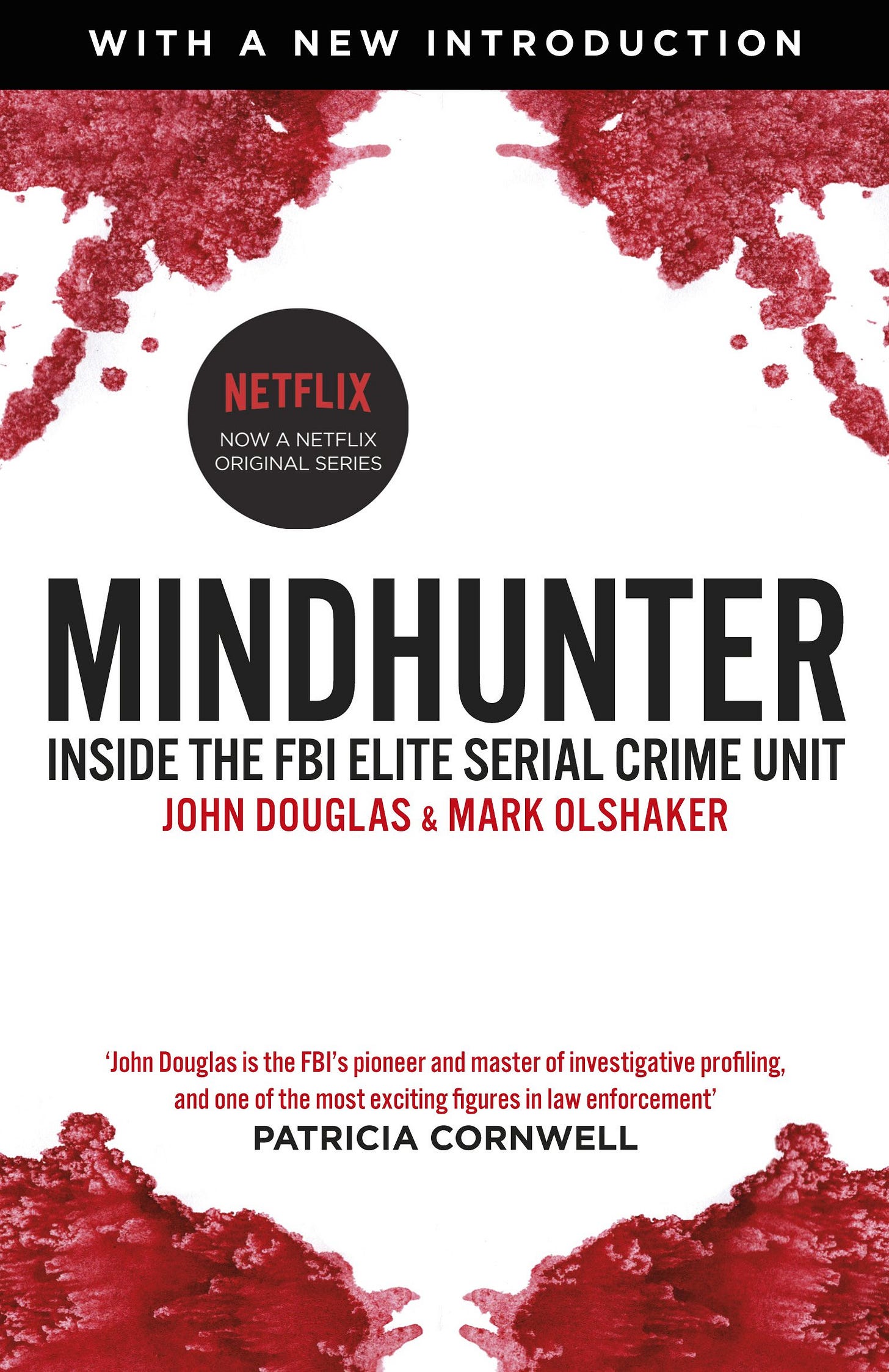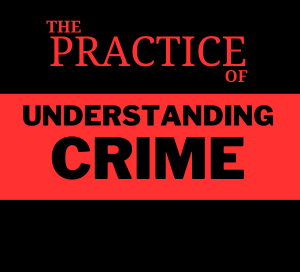Beyond the Archives: Aaron Jacklin Striving for Better Crime Journalism
Criminology Research & Reporting on Crime
Curing Crime is delighted to interview
in this issue of Beyond the Archives.Jacklin is an excellent aggregator of academic research related to crime and criminal activity. These curated lists help those interested in ongoing criminal issues find valuable resources. Jacklin has also began working on writing articles about crime that are based on solid research.
CC: What sparked your interest in your field of study? Was there anything specific?
That’s a bit of a convoluted story.
Back in the late 1990s, I’d earned my black belt in a martial art called Kempo and was teaching at the dojo. I was passionate about teaching self defence because I knew people who’d been victims of violence. Then I read Mindhunter: Inside the FBI's Elite Serial Crime Unit by John Douglas and Mark Olshaker. I realized crime could be studied, and I thought that if I studied crime, I could better teach self defence.

So I went to university to study criminology. Along with learning a lot about crime, I learned about the flaws of crime journalism. Flaws and all, I saw the necessity for good crime journalism, so I joined the campus newspaper. I left university as an aspiring journalist planning to report on criminology and related topics in new ways. I went to journalism school, did some work in the industry, then did an MA in criminology and criminal justice policy where, in addition to the core curriculum, I studied and theorized how online news could improve crime journalism. That eventually brought me here.
CC: Why Substack? What do you hope to achieve here?
I tried to do newsletters before, but through services that concentrated on newsletter marketing, making them poor fits for what I was trying to do. When I found out about Substack and how it makes it relatively easy for newsletter readers to find newsletters they’re interested in, I felt the fit I was looking for.
Now, I have two newsletters on Substack. In The Art of Explaining Crime, I’m trying to take what I’ve learned about explaining crime and make it accessible to others writing about crime. In The Practice of Understanding Crime, I’m covering crime and criminal justice research, doing what I call “criminology journalism.” I’m really only getting started on the second newsletter.
I hope to both tell stories about new research and model what I would like to see more of in the world of crime journalism.
CC: How do you balance storytelling with academic rigor when publishing? You curate and organize published work about crime. Can you tell us a bit more about this project?
Certainly! To my never-ending frustration, storytelling has taken a backseat to academic rigour up until now.
When I first set out to do criminology journalism, I knew I wanted to report on new research as news. My first challenge was discovery, or finding the best stories to tell. I wanted to choose from newly published, online-first research studies published by the top academic journals in the field.
I was going from one academic journal’s home page to another, looking for studies. What I found was that there’s a lot of research published every week that deserves coverage. So much that I could spend all my available time just finding it all if I kept doing what I was doing.
I needed a directory of new criminology research that I could browse and choose research to cover. I needed to know that there wasn’t a better story to be told from a research study I just didn’t know about.
But, there wasn’t anybody that I could find who was already doing this foundational work.
So I built what I needed. Sometimes it feels like it’s held together with duct tape and superglue, but I have a Google Sheet with some associated code, that I wrote, that queries an external resource called Crossref for relevant new research every day and logs it in the sheet.
I’ve focussed on aggregation, organization, and curation because I want journalists like myself to have a resource that they can turn to that gives them an overview of recently published research so they can make better choices about what research to cover.
Now that I’m satisfied with the discovery system, the next phase of my Substack journey is to go back to what I wanted to do in the first place: reporting on new research as news. Most of that coverage will be on my second newsletter, The Practice of Understanding Crime.
CC: Briefly, tell us what you study and, in your opinion, what is the most pressing issue or the most intriguing unanswered question in your field. Why do you think it matters today?
I guess my field of study is the discipline of criminology itself, and I think the most pressing issue is the relative lack of journalistic coverage the discipline gets. There are more people and organizations doing good and adjacent work now than even a handful of years ago, but that number needs to grow. Crime’s always been a lightning rod for misinformation, lies, and political rhetoric, so people need credible, up-to-date, quality information about crime and its causes so that we can work effectively to reduce the harm caused by crime. Maybe it’s too idealistic, and criminology journalism is definitely not enough on its own, but we have to get that information out there.
CC: What’s the most surprising or counterintuitive thing you’ve learned in your research?
I have to admit that I was surprised by just how much research gets published each year. My spreadsheet for 2024 had nearly 2,900 studies. So far, 2025 has about 900. It makes sense when you consider how many people are out there doing this research, but it still surprised me.
CC: Are there any historical cases or theories that you believe deserve more attention? Why? (These can be current).
Where to start? It’s been said that criminology is a “battlefield” of theories. There are hundreds to choose from and so many deserve more attention. I’ll limit myself to one example of a group of theories in the interest of space.
Having said all that, I think feminist theories of crime should receive more attention. Crime is overwhelmingly gendered, in that men commit far more crime than women. We’ve known this for a long time. Feminist criminology has tackled the question of why that is and is tackling questions surrounding crime and the intersection of things like gender, race, and sexual identity. Traditional criminological theories haven’t considered these factors.
CC: What books, films, or documentaries would you recommend for someone looking to understand your field better?
I suggest the following three books:
Vold’s Theoretical Criminology by Jeffrey B. Snipes, Thomas J. Bernard, and Rick Trinkner.
The Elements of Journalism: What Newspeople Should Know and the Public Should Expect by Bill Kovach & Tom Rosenstiel.
Science Journalism: An Introduction by Martin Angler.
CC: If the public could grasp just one key idea about crime and justice, what would it be and why?
“Crime” is not a simple or monolithic thing that has a single explanation or solution. The justice system addresses so many kinds of crime and there are competing theories for what causes each of them, let alone what we should do about them. With that in mind, the simpler a politician’s “solution” for “crime” is, the more you should slow down and examine what the research says before supporting that politician.
CC: Could you recommend 2-3 of your posts so our readers can get a taste of your work?
Absolutely!
This first is one of the aggregation posts from The Art of Explaining Crime:
Next we have one of the curation posts, also from The Art of Explaining Crime:
And this is a longer piece, published on The Practice of Understanding Crime, recounting some recent research:
We have published other articles in our Beyond the Archives Series:
who writes about crime and psychology.Our first Beyond the Archives Post was an interview with PhD Candidate
.












